50 FAQs about Transfer Switches
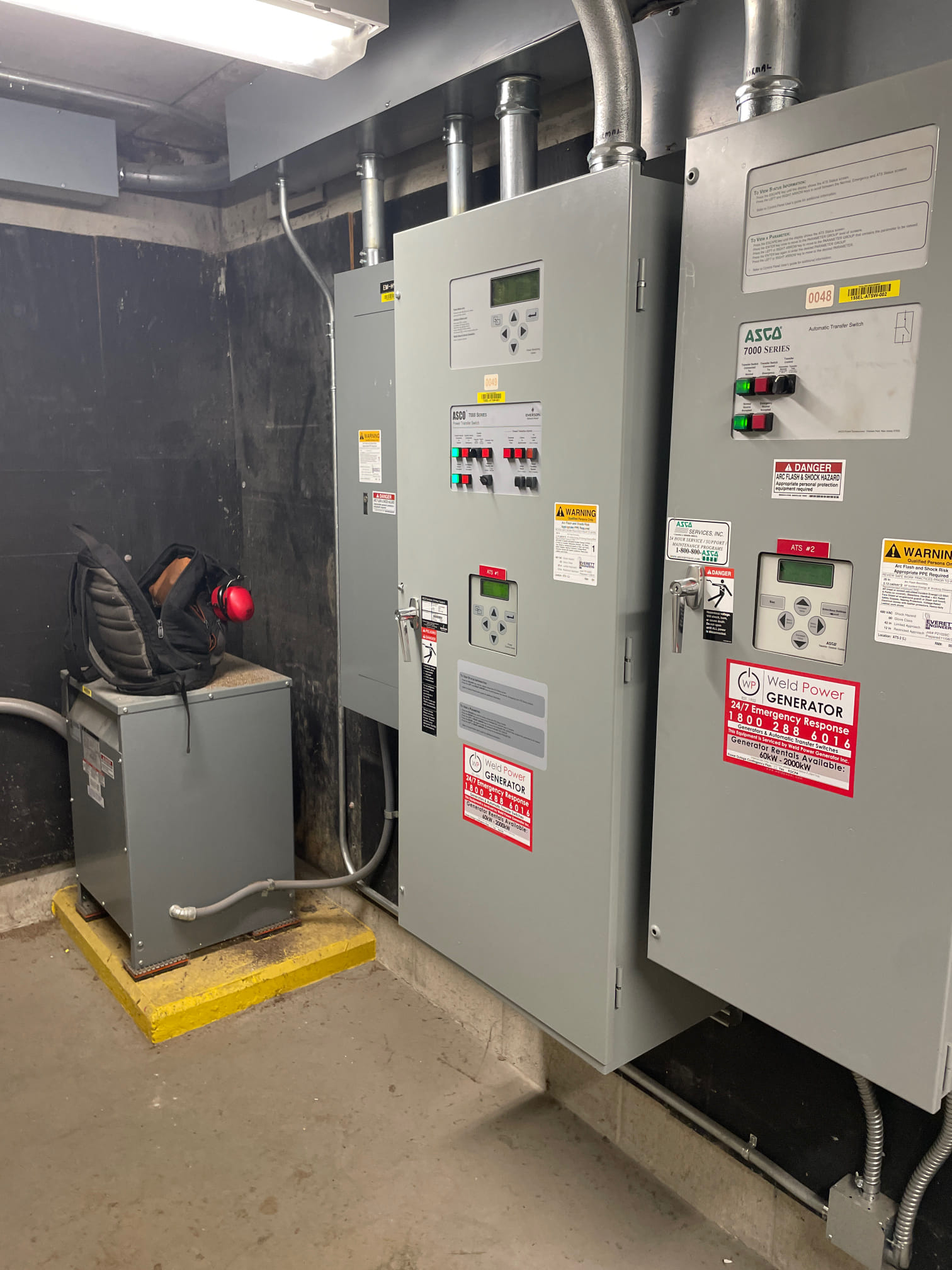
Transfer switches are essential components for ensuring a seamless power transfer between your generator and electrical system during an outage. Whether you’re considering purchasing a new transfer switch, maintaining an existing one, or troubleshooting common issues, understanding how they work and the key considerations involved is crucial for reliable operation. This FAQ guide covers everything from installation and sizing to maintenance, troubleshooting, and safety. Explore these 50 frequently asked questions to ensure your transfer switch operates efficiently and effectively, providing uninterrupted power when you need it most.
Table of Contents
General Questions
What is a transfer switch?
A transfer switch is an electrical device that switches a facility’s power source between the utility grid and a backup generator.
How does it work?
When the primary power source fails, the transfer switch automatically or manually shifts the load to the generator, ensuring continuous power supply.
Why is it important?
Transfer switches provides a safe and efficient way to transition between power sources, preventing electrical backfeed and ensuring reliable power during outages.
What are the different types of switches? (Manual vs. Automatic)
A manual transfer switch requires an operator to physically switch power sources, while an automatic transfer switch (ATS) detects power loss and transfers the load to the generator automatically.
Why is a transfer switch necessary for a generator?
It ensures a seamless and safe transition to backup power, protecting electrical systems from damage and eliminating the risk of backfeeding into the utility grid.
How do I know if I need a transfer switch for my facility?
If your facility relies on backup power for critical operations or safety, a transfer switch is essential to ensure a smooth and automatic transition during outages.
What size transfer switch do I need for my generator?
The size depends on your generator’s capacity and the total electrical load it needs to support, typically measured in amps; a professional assessment is recommended.
Can a faulty transfer switch prevent my generator from starting?
Yes, if the transfer switch fails, it may not properly detect a power outage or switch to generator power, leaving your facility without backup power.
What happens if a transfer switch fails during a power outage?
If the transfer switch malfunctions, power may not be transferred to the generator, resulting in a total power loss until repairs are made. It could also cause the power source to not transfer back to utility power after restoration.
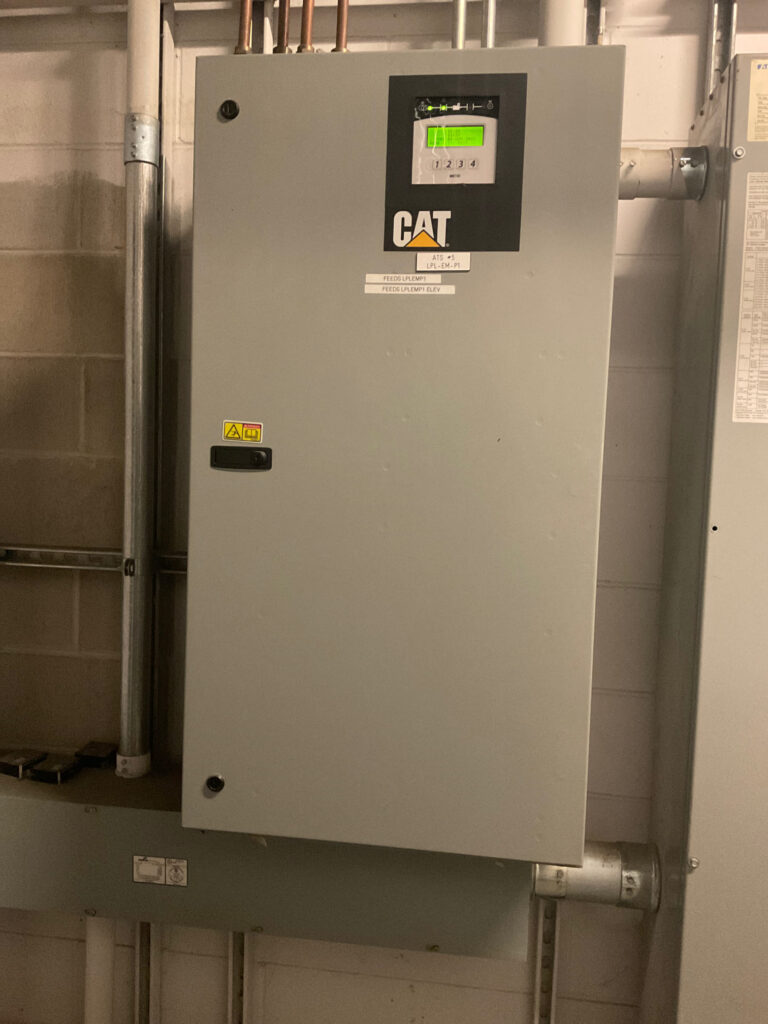
Maintenance, Inspection, & Testing
What is preventative maintenance for a transfer switch?
Preventative maintenance involves regular inspections, testing, and servicing to ensure a transfer switch operates reliably and efficiently during power outages.
What does routine maintenance for transfer switches include?
Maintenance typically includes cleaning, checking for loose connections, lubricating moving parts, testing operation, and verifying proper electrical contacts.
Why is regular transfer switch maintenance necessary?
Routine maintenance ensures the transfer switches functions correctly during an outage, preventing power disruptions and costly downtime.
What are the benefits of preventative maintenance for transfer switches?
Regular maintenance reduces the risk of failure, extends the equipment’s lifespan, ensures compliance with regulations, and improves overall power reliability.
How often should I inspect my transfer switch?
Transfer switches should be visually inspected at least monthly to look for faults or error codes, with a more in-depth inspection and testing performed annually.
How often should I test my transfer switch?
Transfer switches should be tested at least once a month in accordance with NFPA 110 and undergo a full functional test annually to verify proper operation.
How is a transfer switch tested to ensure functionality?
Testing typically involves simulating a power outage to confirm the switch transfers loads correctly, along with electrical testing of components to verify performance.
What records should I keep for transfer switch maintenance?
Maintenance records should include inspection dates, test results, repairs, component replacements, and any issues identified to track performance and ensure compliance.
How do I know if my transfer switch needs maintenance?
Signs such as delayed power transfer, unusual noises, failure to switch power sources, or visible wear indicate the need for maintenance.
What are the most common issues found during ATS inspections?
Common issues include loose or corroded connections, worn electrical contacts, relay failures, and improper phase alignment.
What are the benefits of thermal image scanning on my transfer switches?
Thermal image scanning helps identify hot spots and potential issues like loose connections, worn-out components, or overloaded circuits, allowing for early detection and preventing failures or safety hazards. It provides a non-invasive, accurate method for monitoring the health of your transfer switches.
Can I perform transfer switch maintenance myself, or should I hire a professional?
While basic visual inspections can be done in-house, performing transfer switch maintenance yourself is dangerous due to high voltage risks, including electrical shock, arc flashes, and fire hazards. Improper maintenance can also lead to switch failure, causing costly downtime and compliance issues. Professionals have the tools and expertise to perform critical testing, adjustments, and repairs safely while meeting NFPA and NEC standards. Hiring a qualified technician ensures safety, reliability, and regulatory compliance.
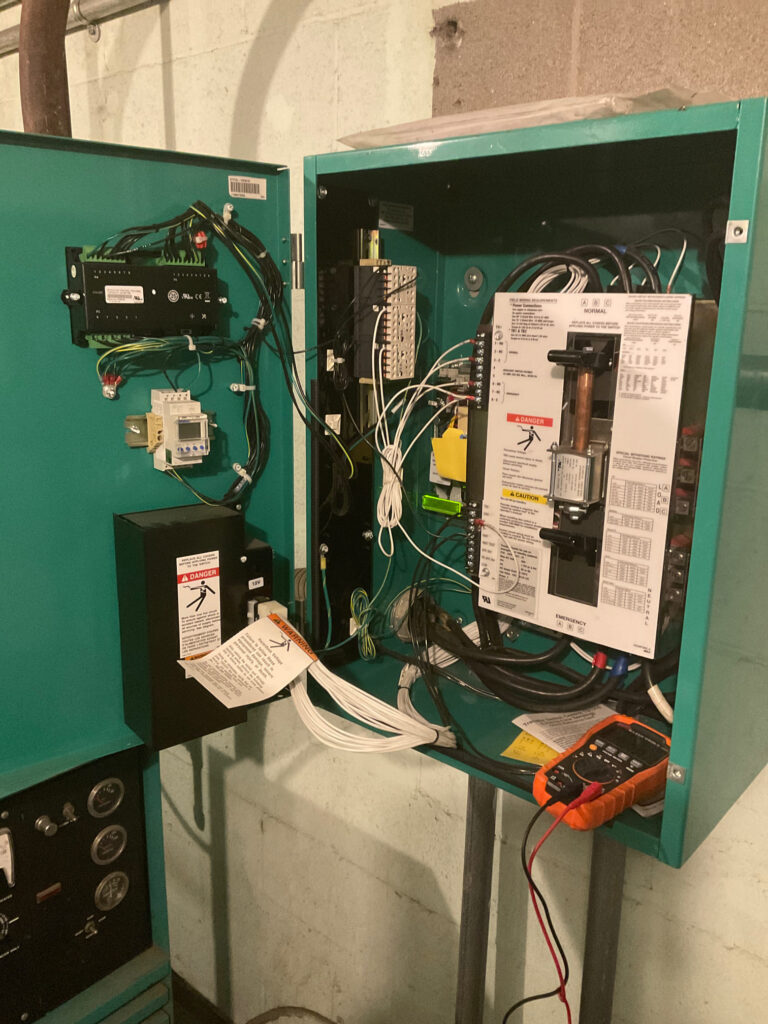
Battery & Power Supply
How does the battery backup system in a transfer switch work?
The battery backup in a transfer switch provides temporary power to the switch’s control panel, ensuring it can operate during a power outage. This allows the switch to transfer loads even if the main power source is lost.
What should I do if the battery backup fails?
If the battery backup fails, contact a professional immediately to diagnose the issue and prevent potential transfer switch failure. Attempting repairs without proper expertise is dangerous and can lead to further damage or system malfunctions.
How often should I check the power supply to the transfer switch?
The power supply to the transfer switch should be checked during routine maintenance, typically at least once a year. More frequent checks may be needed for critical systems to ensure reliable operation.
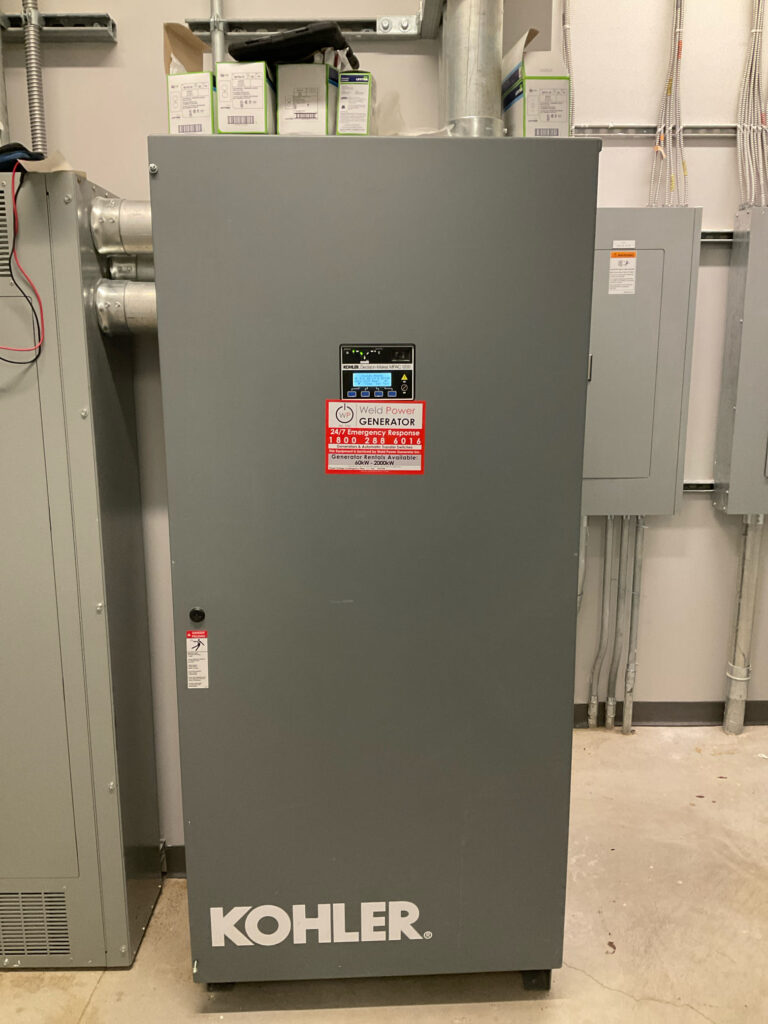
Issues & Troubleshooting
Why is my transfer switch making unusual noises?
Unusual noises from a transfer switch may indicate electrical arcing, loose connections, or worn-out components, all of which can lead to system failure if not addressed. Contact a professional for immediate service.
What should I do if my transfer switch fails during a power outage?
A failed transfer switch can prevent backup power from reaching your facility, causing operational downtime and safety risks, requiring immediate professional service.
What are the signs of a faulty transfer switch?
Signs of a faulty transfer switch include delayed or failed power transfer, buzzing or clicking noises, visible damage, overheating, or inconsistent generator operation.
Why is my transfer switch not transferring power automatically?
A transfer switch may fail to operate automatically due to a control failure, sensor malfunction, wiring issues, or battery backup failure, all of which require professional diagnosis.
What are common issues with transfer switches?
Common issues include electrical arcing, stuck or worn-out contacts, loose connections, control board failures, and improper voltage sensing, which can prevent proper power transfer.
Can a transfer switch be repaired, or does it need to be replaced?
Depending on the severity of the issue, some transfer switches can be repaired by replacing faulty components, but in cases of extensive damage or outdated equipment, a full replacement may be necessary.
What should I do if my transfer switch fails to transfer power?
A failed transfer switch can disrupt critical operations and should be addressed by a professional immediately to diagnose and resolve the underlying issue.
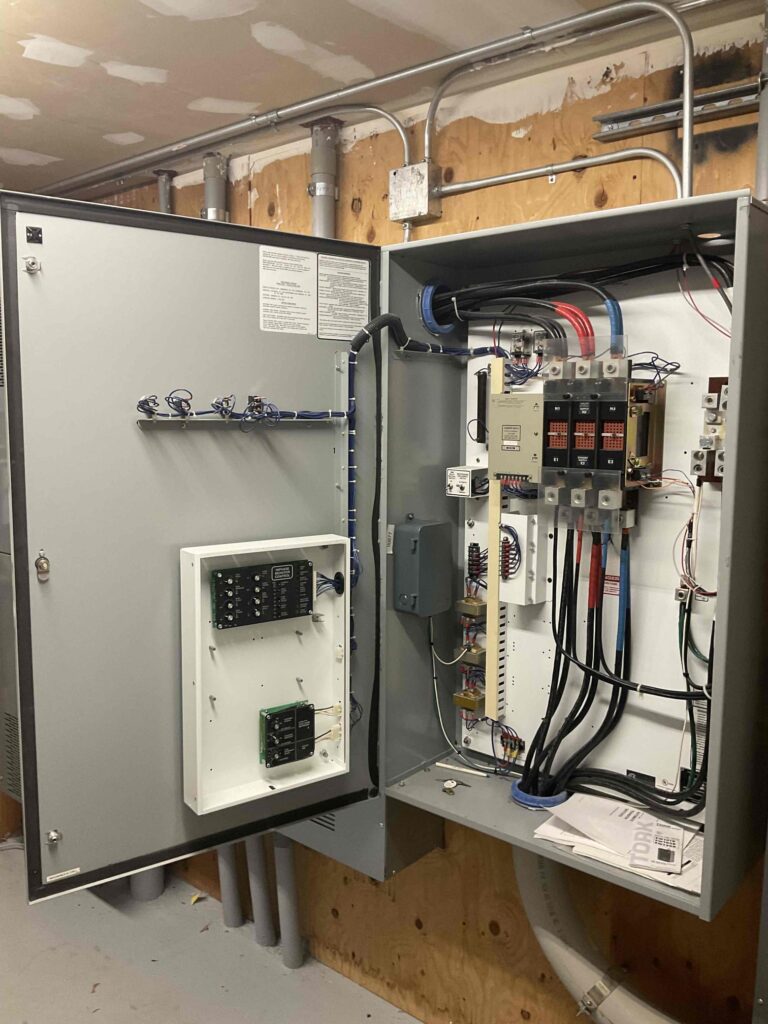
Installation & Compatibility
How do I determine the right transfer switch for my application?
The right transfer switch depends on factors like your generator’s capacity, load requirements, voltage compatibility, and whether you need manual or automatic operation. Consulting a professional ensures proper selection for your specific application.
Are transfer switches compatible with all generator brands?
Most transfer switches are designed to be compatible with various generator brands, but compatibility depends on factors like voltage, phase, and control features, requiring proper matching to ensure seamless operation.
What factors should I consider when selecting an automatic transfer switch (ATS)?
Key factors include load capacity, switching speed, voltage rating, number of poles, and integration with your generator and electrical system to ensure reliable power transfer.
Does Weld Power Generator provide turnkey installation services for transfer switches?
Yes, Weld Power Generator offers turnkey installation services, handling everything from equipment selection to installation and commissioning for a seamless power solution.
Can my generator be connected to multiple transfer switches?
Yes, a generator can be connected to multiple transfer switches if properly designed, allowing power distribution to different loads or locations based on your facility’s needs.

Upgrades & Replacements
What are the signs that it’s time to replace my existing transfer switch?
You should consider replacing your transfer switch if it experiences frequent failures, shows signs of wear or overheating, is outdated, or no longer meets your facility’s power needs.
Can I upgrade my existing manual transfer switch to an automatic transfer switch?
Yes, a manual transfer switches can be upgraded to an automatic transfer switches, but it requires proper system compatibility and professional installation.
What are the benefits of upgrading to a newer transfer switch model?
Newer transfer switches offer improved reliability, faster transfer times, advanced monitoring capabilities, and better compliance with modern safety and efficiency standards.
Does Weld Power Generator offer different transfer switch brands and options?
Yes, Weld Power Generator offers a variety of transfer switch brands and configurations to meet different power needs and budget requirements.
How long does it take to replace a transfer switch?
Transfer switch replacement time varies based on system complexity but typically takes several hours to a full day, ensuring proper installation and testing. However, there can be a long lead time for the equipment itself.
What factors should I consider when purchasing a new transfer switch?
Consider your generator’s capacity, load requirements, voltage compatibility, whether you need a manual or automatic model, and compliance with local codes and regulations.
How do I determine the correct size and capacity for a transfer switch?
The transfer switch should be sized based on the total wattage of the loads you want to power during an outage, ensuring it can handle the generator’s output and required load.
How much does a new transfer switch typically cost?
The cost of a new transfer switch can vary greatly depending on the type, size, and features required for your application. Contact our sales team for a free quote.
What is involved in the installation of a new transfer switch?
Installation involves selecting the appropriate location, wiring the transfer switch to the generator and electrical system, testing the system, and ensuring compliance with safety codes.
What are the key features to consider when choosing a transfer switch?
Key features include load capacity, automatic or manual operation, ease of installation, monitoring capabilities, and compliance with local electrical codes.
What is the expected lifespan of a transfer switch?
The typical lifespan of a transfer switch is around 10 to 20 years, depending on maintenance, usage, and environmental conditions.
Are there specific regulations I need to follow when installing a new transfer switch?
Yes, transfer switch installations must comply with local electrical codes, such as the NEC, and may require permits and inspections for safety and legal compliance.
What warranty options are available for new transfer switches?
Warranty options vary by manufacturer and model, our expert sales team can discuss these options with you.
